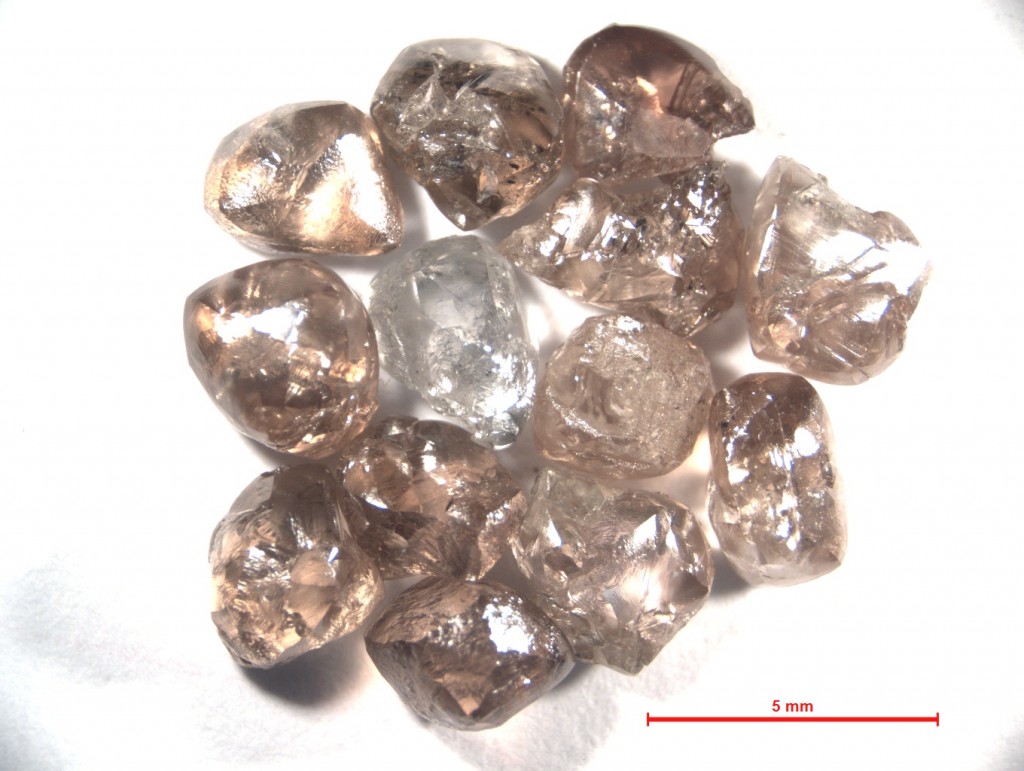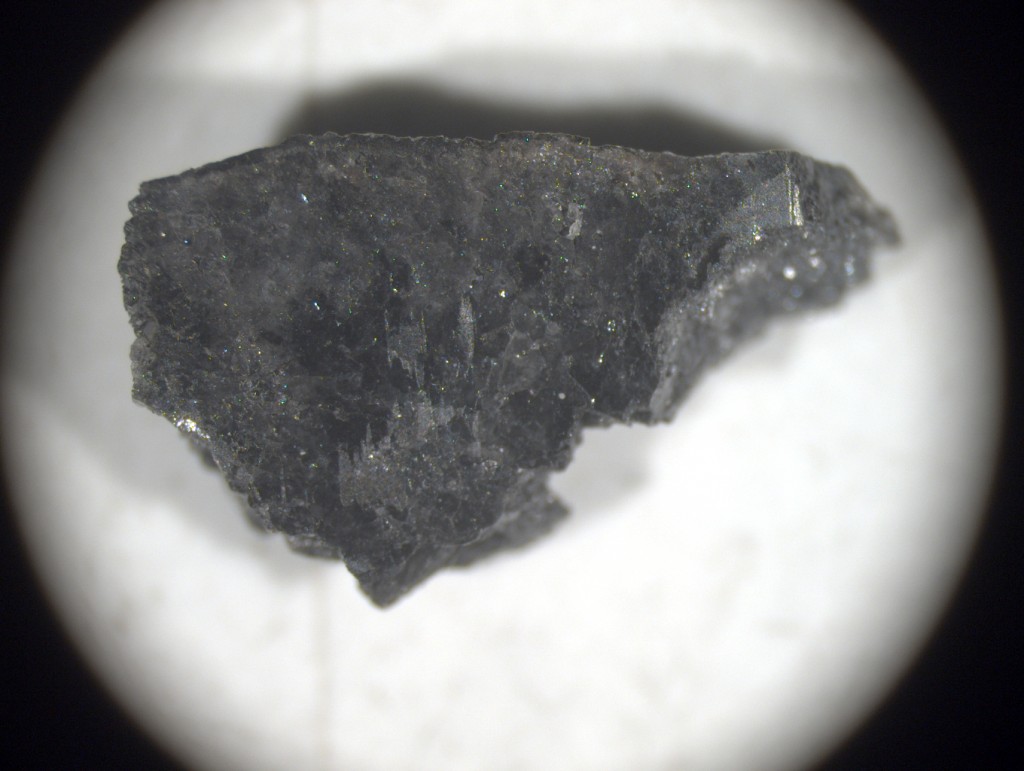12 October 2012
On the early lives of diamonds
Posted by kramsayer

These 13 diamonds are riddled with bits of the Earth’s mantle, packed with geochemical data scientists are using to determined how diamonds form. These particular diamonds were not used in the study. (Credit: Ekaterina Rubanova)
Diamonds may not be forever, but they do last an incredibly long time. The forces in the Earth’s interior that shape these famously durable gems have long been mysterious. A new study looks at teensy chunks of an inner zone of the planet that can get caught within diamonds’ crystal structures. It presents new evidence that diamonds often take a long ride in the planet’s fluidly moving gut before rising to the surface.
Scientists don’t know much about Earth’s deep internal region called the mantle, which is impossible to directly observe because it starts about 35 kilometers (21.7 miles) below the surface and stretches thousands of kilometers deep. But they do know the mantle is the only place with enough pressure for carbon to crystallize into diamonds, and that diamonds can only get close to the surface by way of Earth’s most powerful volcanic eruptions.
As carbon in the mantle forms into a diamond, it sometimes captures a tiny non-carbon chunk of the mantle – called an inclusion — in its interior, preserving it like a time capsule. These gray diamonds look more like normal stones than what you’d see in a jeweler’s display. But these rocks are still diamonds, and to a scientist they glimmer with rare and valuable data. “We can’t drill a hole and sample the mantle directly because it’s too deep, but through diamond inclusions we can study the mantle,” says mineralogist Ekaterina Rubanova of the ARC Centre of Excellence for Core and Crust Fluid Systems of Macquarie University in New South Wales, Australia.
Rubanova’s study on diamond formation will be published Saturday in Geochemistry Geophysics Geosystems, a journal of the American Geophysical Union.
Diamond rocks have a second mantle-snatching trick, Rubanova says. After forming, a diamond will sometimes deform – bending, twisting and cracking as it drifts along in the fluid motion of the mantle. When it recrystallizes, it reforms its structure, only skewed, creating gaps within the diamond’s architecture. These gaps, called interstitials, only appear because of diamond deformation, and they can also trap tiny bits of mantle.

One of three diamonds, with a side sliced off by a laser, used to study diamond formation. (Credit: Ekaterina Rubanova)
The inclusions and interstitials in these diamonds are very tiny, only about 5 to 50 thousandths of a millimeter (0.0003 inches) each. They’re too delicate to access by smashing the diamonds. Instead, Rubanova and her colleagues sliced off a bit of each of three diamonds with an industrial laser to smooth one surface, polished them, and beamed electrons into the diamonds’ sliced surfaces to make them glow. They captured the light from each diamond’s interior to map out the miniscule crystalline structures within, allowing them to document the chemical composition of these irregularities and the diamond structures that hold them.
The researchers found that the diamonds had been intensely deformed by the mantle – as intensely as any other mineral might deform – even though diamonds are the hardest mineral in the world. They also found that inclusions and interstitials within the same diamonds were chemically different, suggesting that each went on a trip through at least two completely different geochemical environments inside the mantle. In particular, the scientists report that the interstitials had notably more magnesium content than the inclusions. They say the low-magnesium inclusions formed when the diamond first crystallized, while the magnesium-rich interstitials formed as the diamonds deformed and recrystallized, possibly right before a volcanic eruption propelled them to the surface. Also, two of the diamonds the researchers studied had chemically different inclusions, but interstitials with very similar magnesium levels. This means that diamonds can form in different parts of the mantle but collect in a common place before being ejected to the surface, Rubanova said.
These findings suggest that there is often a time gap between when a diamond forms and when it is deformed, a period long enough for the diamond to find itself in a completely changed chemical environment before a volcanic eruption can carry it to the surface. Rubanova says this rules out the hypothesis held by some in the field that diamond rocks form shortly before the eruptions, and that interstitials and deformation are part of the original diamond genesis.
“It’s well known that, in the mantle, nothing is ever pristine,” said mineralogist Kathleen Smart of the University of Munster in Germany, so it’s not a surprise that diamonds can deform. But, she said Rubanova’s research does shows evidence for two different kinds of mantle being caught in the crystalline bodies of two diamonds. Smart said that Rubanova successfully set the stage for research on diamonds using similar methods.
– Sean Treacy, AGU science writing intern


 GeoSpace is a blog on Earth and space science, managed by AGU’s Public Information staff. The blog features posts by AGU writers and guest contributors on all sorts of relevant science topics, but with a focus on new research and geo and space sciences-related stories that are currently in the news.
GeoSpace is a blog on Earth and space science, managed by AGU’s Public Information staff. The blog features posts by AGU writers and guest contributors on all sorts of relevant science topics, but with a focus on new research and geo and space sciences-related stories that are currently in the news.